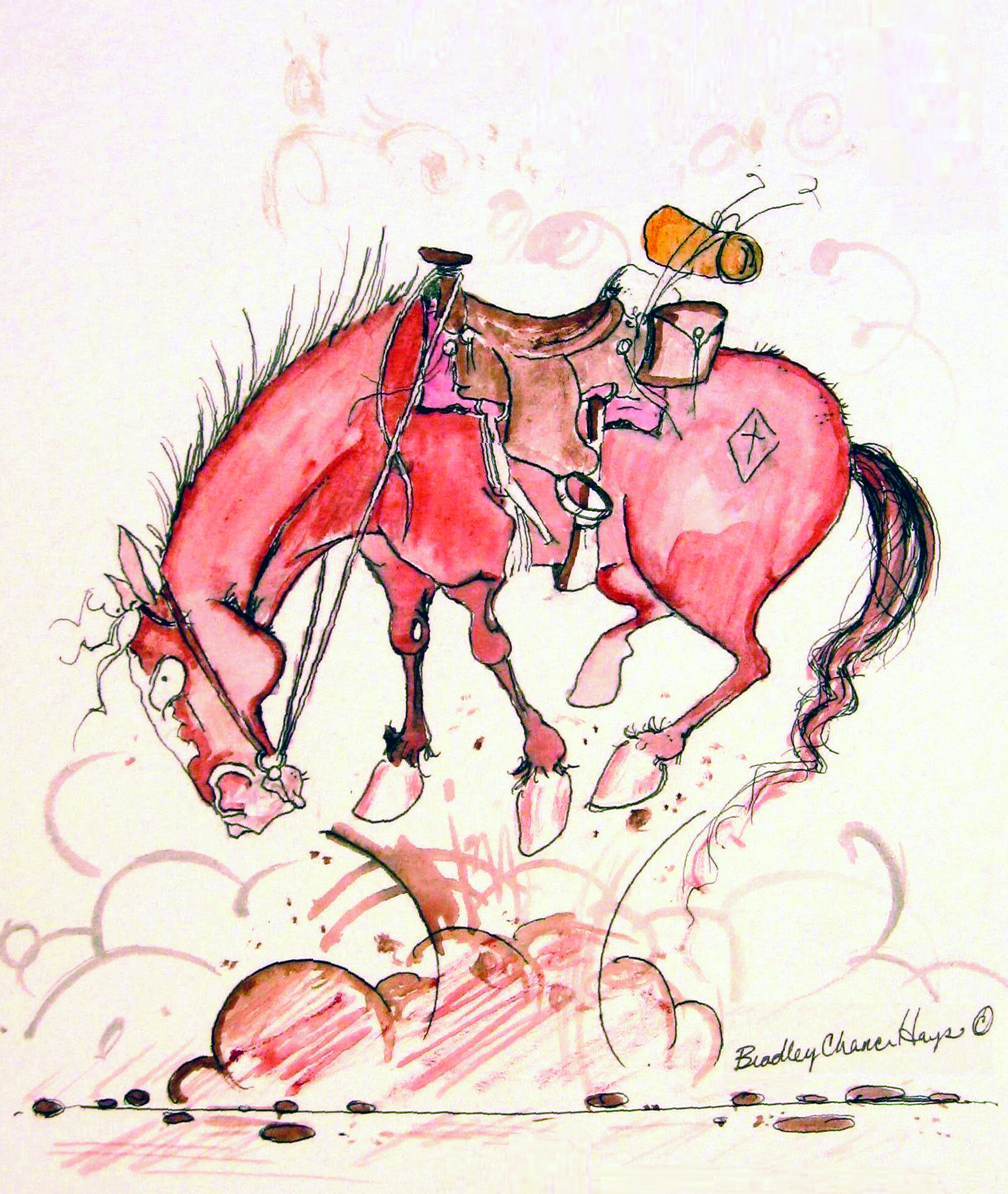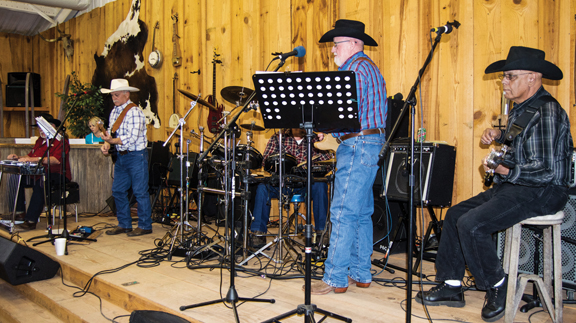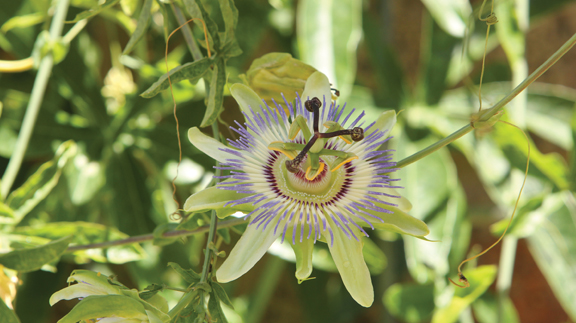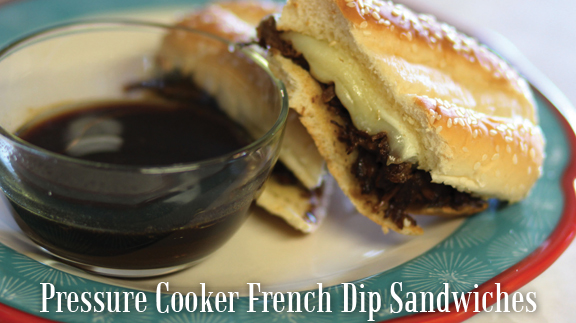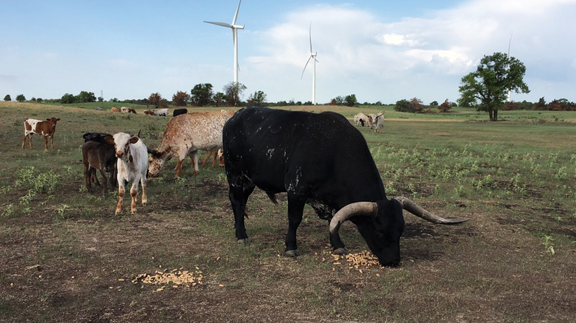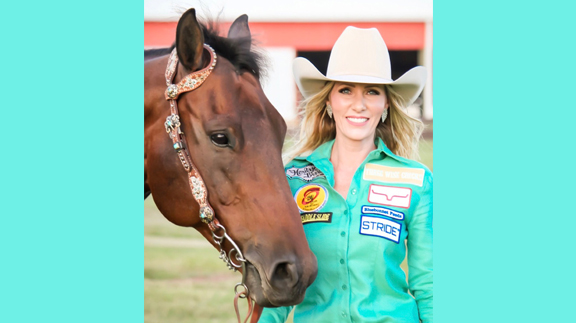Country Lifestyle
March 2016 Profile – Bradley Chance Hays
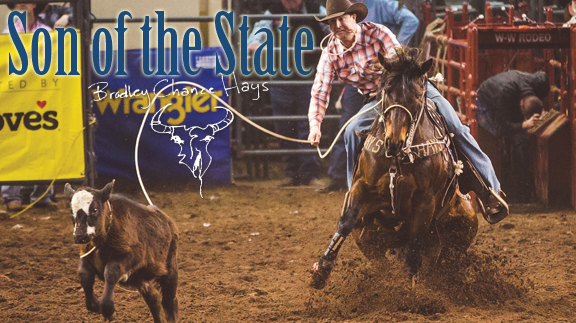
Son of the State: Bradley Chance Hays
By Laci Jones
Roper. Artist. Trainer. Bradley Chance Hays is a man of many talents. Hays was born in Tulsa in 1985. Growing up, he had the opportunity to explore his talents and eventually combine his passions to one successful career.
“When I was a kid, my mom was an elementary school teacher,” Hays said. “My father was a rodeo cowboy.”
Hays’ father is an interim preacher, but he was also a tie-down roper and a professional bulldogger. His father also attended Oklahoma Panhandle State University and rode with Robert Etbauer, world champion saddle bronc rider.
At six years old, Hays’ father handed him a pink rope.
“I asked him why,” Hays explained. “He said, ‘I knew you wouldn’t like it. If you use it enough, it will fall apart and you can get another one.’ That was his philosophy.”
Hays used the pink rope, and he eventually told his father the rope had a kink in it. He received a new rope and got to work.
To learn more about Bradley Chance Hays, pick up the March issue of OKFR!
Country Lifestyle
Protecting Pollinators: Strategies for Supporting Bee Populations in Oklahoma
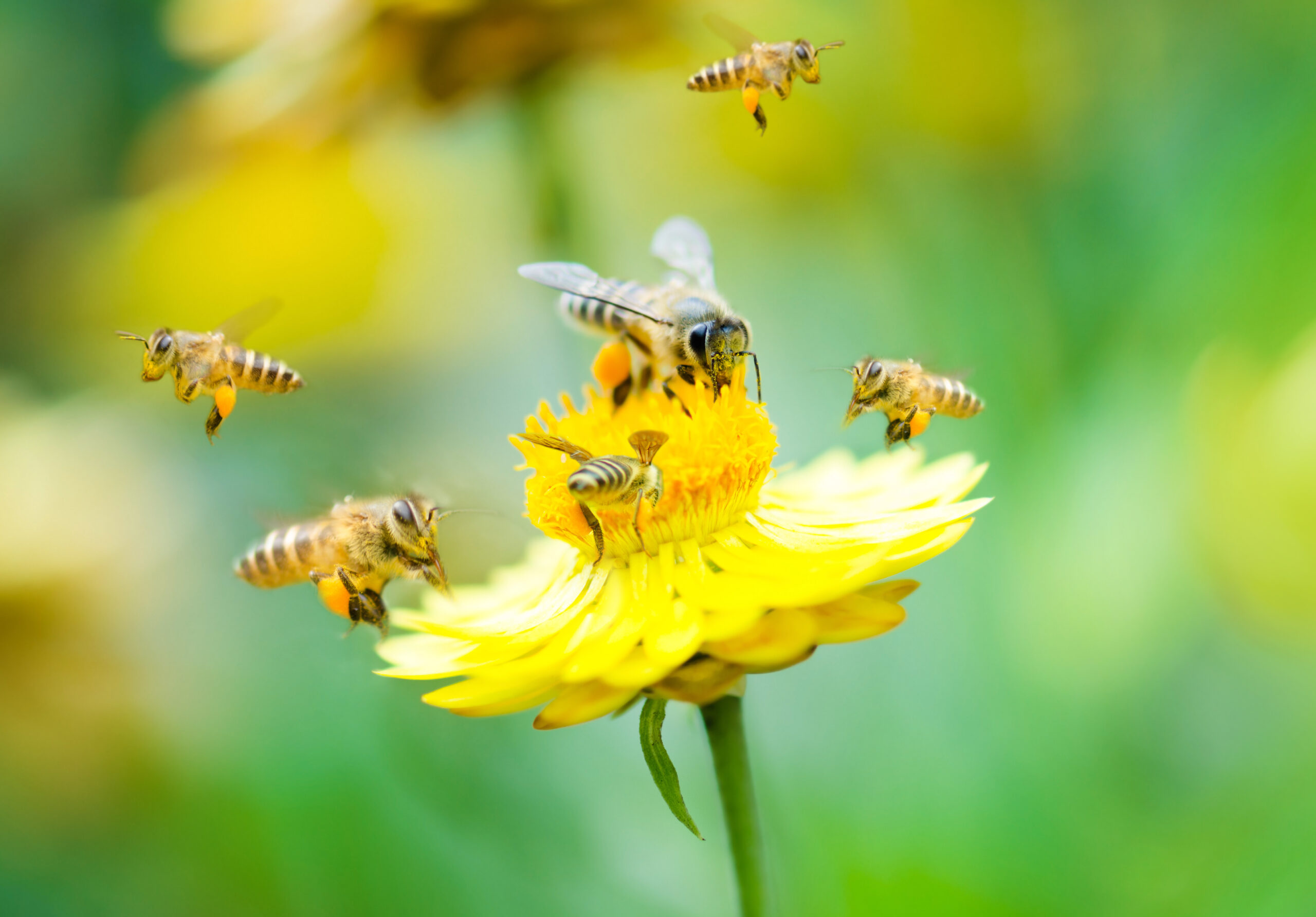
Pollinators, especially bees, play a crucial role in our ecosystem and agricultural landscape. They are responsible for pollinating many of the crops that we rely on for food production. However, bee populations worldwide have been declining due to various factors, including habitat loss, pesticide use, disease, and climate change. In Oklahoma, where agriculture is a significant industry, protecting pollinators is of utmost importance. Here we explore some strategies for supporting bee populations in Oklahoma and why it’s essential for the health of our environment and economy.
Understanding the Importance of Bees
Before delving into strategies for protecting bee populations, it’s essential to understand why bees are so vital. Bees are one of the most effective pollinators, playing a crucial role in the reproduction of flowering plants, including many crops such as fruits, vegetables, and nuts. Without bees, the pollination process would be severely disrupted, leading to reduced crop yields and potentially threatening food security.
In Oklahoma, bees contribute significantly to the state’s agricultural economy by pollinating crops like cotton, canola, alfalfa, and various fruits and vegetables. According to the Oklahoma Department of Agriculture, Food, and Forestry, pollinators contribute over $157 million annually to the state’s economy. Therefore, protecting bee populations is not only essential for environmental conservation but also for the economic sustainability of agriculture in Oklahoma.
Challenges Facing Bee Populations in Oklahoma
Despite their importance, bee populations in Oklahoma, like elsewhere, face numerous challenges that threaten their survival. One of the primary threats is habitat loss due to urbanization, agricultural expansion, and land development. As natural habitats disappear, bees lose the food sources and nesting sites they need to thrive.
Furthermore, the use of pesticides, including neonicotinoids and other chemical treatments, poses a significant risk to bee populations. Pesticides can harm bees directly through poisoning or indirectly by contaminating their food sources and disrupting their reproductive cycles. Climate change also exacerbates the challenges faced by bees, affecting flowering patterns, altering habitat suitability, and increasing the frequency of extreme weather events.
Strategies for Supporting Bee Populations
While the challenges facing bee populations are daunting, there are several strategies that individuals, farmers, and policymakers can implement to support bee populations in Oklahoma:
- Creating Pollinator Habitat: One of the most effective ways to support bees is by creating and preserving pollinator-friendly habitat. This can include planting native wildflowers, flowering trees, and shrubs that provide bees with a diverse and abundant source of nectar and pollen. Additionally, leaving natural areas, such as meadows and hedgerows, untouched can provide essential nesting sites for solitary bees.
- Reducing Pesticide Use: Minimizing the use of pesticides, especially bee-toxic chemicals like neonicotinoids, is crucial for bee conservation. Farmers can adopt integrated pest management (IPM) practices that prioritize non-chemical methods of pest control, such as crop rotation, biological control, and using pest-resistant crop varieties. When pesticides are necessary, they should be applied judiciously, following label instructions and avoiding spraying during times when bees are most active.
- Supporting Organic Agriculture: Organic farming practices that eschew synthetic pesticides and fertilizers are inherently more bee-friendly. By supporting organic agriculture and purchasing organic products, consumers can help create demand for farming methods that prioritize environmental sustainability and pollinator health.
- Educating the Public: Increasing public awareness about the importance of bees and the threats they face is essential for fostering support for bee conservation efforts. Educational initiatives can include school programs, community workshops, and public outreach campaigns that highlight the role of bees in food production and the steps individuals can take to protect them.
- Collaborating with Stakeholders: Protecting bee populations requires collaboration among various stakeholders, including farmers, landowners, conservation organizations, government agencies, and researchers. By working together, these groups can develop and implement comprehensive strategies for conserving bee habitat, reducing pesticide exposure, and promoting bee-friendly farming practices.
Conclusion
Protecting pollinators, particularly bees, is a critical priority for environmental conservation and agricultural sustainability in Oklahoma. By implementing strategies such as creating pollinator habitat, reducing pesticide use, supporting organic agriculture, educating the public, and collaborating with stakeholders, we can help support bee populations and ensure their continued role in pollinating our crops and maintaining ecosystem health. By taking action now, we can secure a future where bees thrive, benefiting both our environment and our economy.
Top of Form
References:
Oklahoma Department of Agriculture, Food, and Forestry. (n.d.). Pollinators in Oklahoma. Retrieved from https://www.oda.state.ok.us/food/fs-pollinators.htm
Xerces Society for Invertebrate Conservation. (2022). Neonicotinoids. Retrieved from https://xerces.org/neonicotinoids
National Institute of Environmental Health Sciences. (2022). Climate Change and Human Health – Heat Impacts on Pollinators. Retrieved from https://www.niehs.nih.gov/research/supported/translational/peph/webinars/heat-impacts-on-pollinators/index.cfm
United States Environmental Protection Agency. (2022). Integrated Pest Management (IPM) Principles. Retrieved from https://www.epa.gov/safepestcontrol/integrated-pest-management-ipm-principles
Organic Trade Association. (n.d.). Why Buy Organic? Retrieved from https://www.ota.com/why-buy-organic
Pollinator Partnership. (n.d.). Education & Outreach. Retrieved from https://www.pollinator.org/education-outreach
United States Department of Agriculture. (n.d.). Partnerships for Pollinators. Retrieved from https://www.usda.gov/media/blog/2016/06/24/partnerships-pollinators
These references provide a comprehensive overview of the topics discussed in the article, including the importance of pollinators, the challenges they face, and strategies for supporting bee populations in Oklahoma.
Country Lifestyle
Western Housewives – April 2024
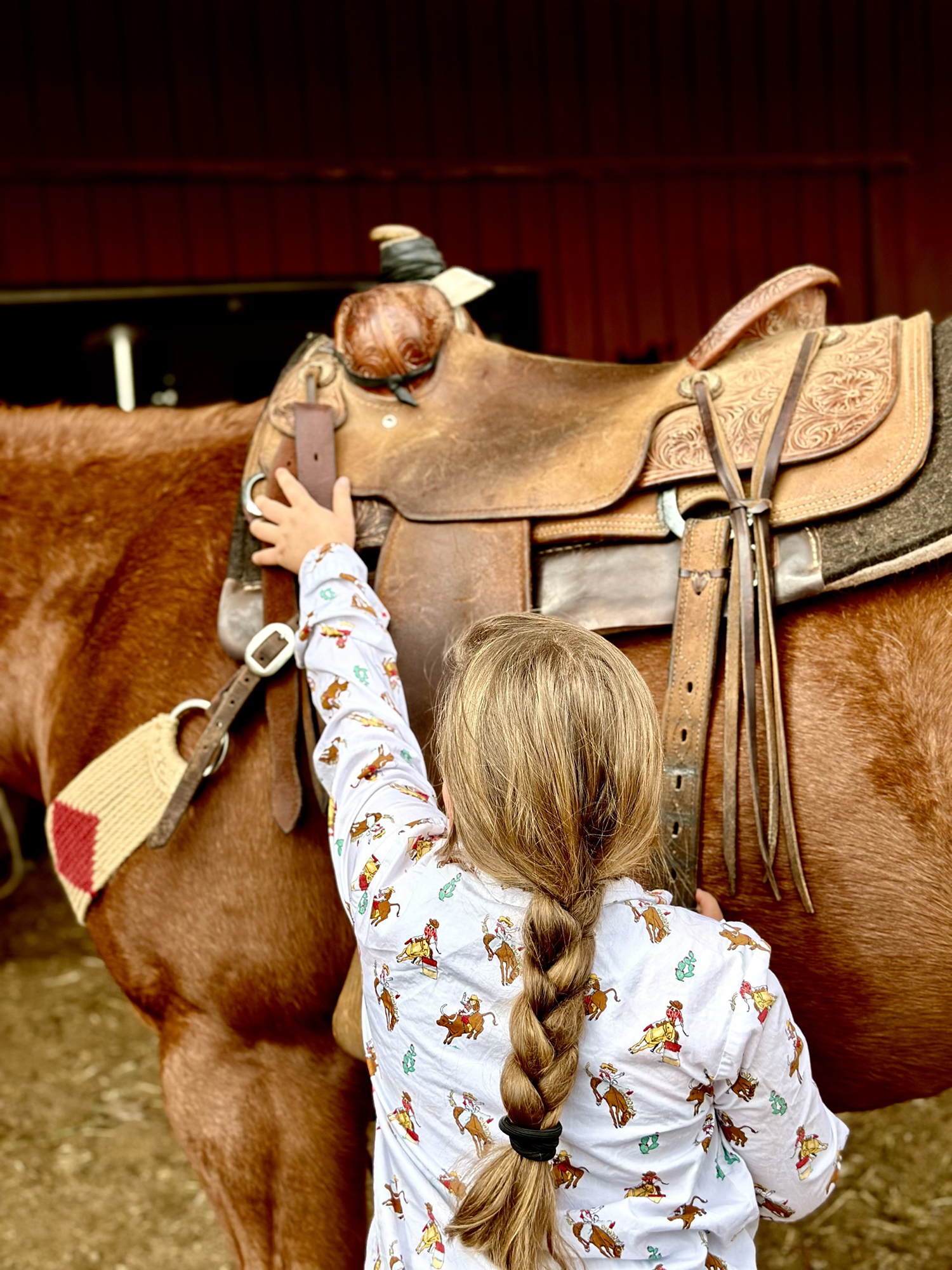
I am a mother. I do not know about the rest of you mothers, but the second I became “Mom,” my life became a constant state of wondering if I am doing a good job.
That is especially hard to tell when you choose to homeschool. I have no feedback from anyone that is not family. No teacher conferences telling me the little girl talks too much or the oldest boy can not sit still. Sure, I could ask my husband how he thinks our kids are maturing emotionally and intellectually. Still, he would most likely look out the window and see the aforementioned children running around in the sand with only socks on. He would then look at me and ask me to make him a quesadilla. I would say yes, we would joke about socks, and life would go on. See? Zero feedback to go on here.
So, you start to rely on personal experiences. You come up with little tests throughout your days to rate your kids “ready for society” level.
Example 1: A trip to the big city where the kids treat the grocery store as their personal snack depot. They successfully eat all the grapes and a whole block of cheese in your basket before you can check out. As you leave, they tell the door greeter, “Have a nice day.”
Example 2: Your husband enters an indoor rodeo. You are bouncing the baby and notice your oldest child is eating a bag of dippin dots. First, you smile and then remember that she has no money. Come to think of it, the concession stand is not even open. You have now concluded your firstborn has broken into the closed concession stand with her posse of four-year-old convicts and has helped herself to some ice cream.
Example 3: You are in church. The children have managed to be nice and quiet the entire time. After the message and the closing “Amen” is said, your three-year-old turns to you and says, “Well, that wasn’t so bad.”
After a little while, you start to question your “Ready for Society” tests. Are they productive? Are they accurate? I figure the answer to that question is better left unanswered.
One evening this summer, after I had quit conducting all these tests, I was mourning the loss of my children’s place in society when I looked up and noticed all our horses running down our driveway, headed for the neighboring pastures. For a minute, I just sat there wondering what I should do. I was holding the baby and wearing the ever-practical slip-on loafer and had absolutely no idea what was for supper. That had nothing to do with the horses being out, but that is part of being a housewife, I guess. You always wonder if you left the iron on and what is for supper.
While I sat there stunned, pondering life’s biggest questions, my husband and my daughter yelled at me to get a move on as they were already springing into action. My husband ran to stop them, and my daughter was on her way to the barn for some halters. Meanwhile, I was tripping over my loafers, scaring the horses and making already stressful matters much worse.
My husband finally got the horses cornered at the far end of our neighbor’s pasture and waved at me for some assistance. I handed the baby to my daughter and told her to watch the boys and stay in the house while I headed to help.
Within 30 minutes, we caught the horses and led them back to the corrals. I was in a near state of panic, wondering how long the boys had been crying and what state of mind my daughter was in, having just witnessed her dad nearly sweat to death and her mother make terrible fashion choices.
To my surprise, as I walked up to the house, I saw three happy children on the porch eating a supper of plums and peaches. The boys laughed at their sister as she shuffled little cars and cows around for them to play with. Not only had she fed and entertained her brothers, but she had also cleaned the house and fed the chickens to boot. I just stood there quietly watching for a while, not wanting to disturb the moment.
After the kids passed their first ever Ready for Society test, I realized that society’s standards versus my own were probably quite different. Society tells me that my kids need to be clean and quiet. Seen but not heard. Able to recite the ABCs on command but have no opinion on political matters. To be kind to everyone but never bring up God’s name and what He has to do with it. Society says my kids should fall into the assembly line and attend a good college someday to get a good minimum-wage job.
Why would I want my kids to fit into society when I do not even fit into society? No, I think I will keep my dirty little misfits all to myself. I think I will continue raising them to know how to care for themselves and each other. I will continue to show them how to serve God and work hard. I will continue to raise them never to wear slip-on shoes in the pasture and that plums and peaches are a totally acceptable supper on a warm summer evening.
Country Lifestyle
Poinsettia Partnerships Will Make Your Holidays Beautiful
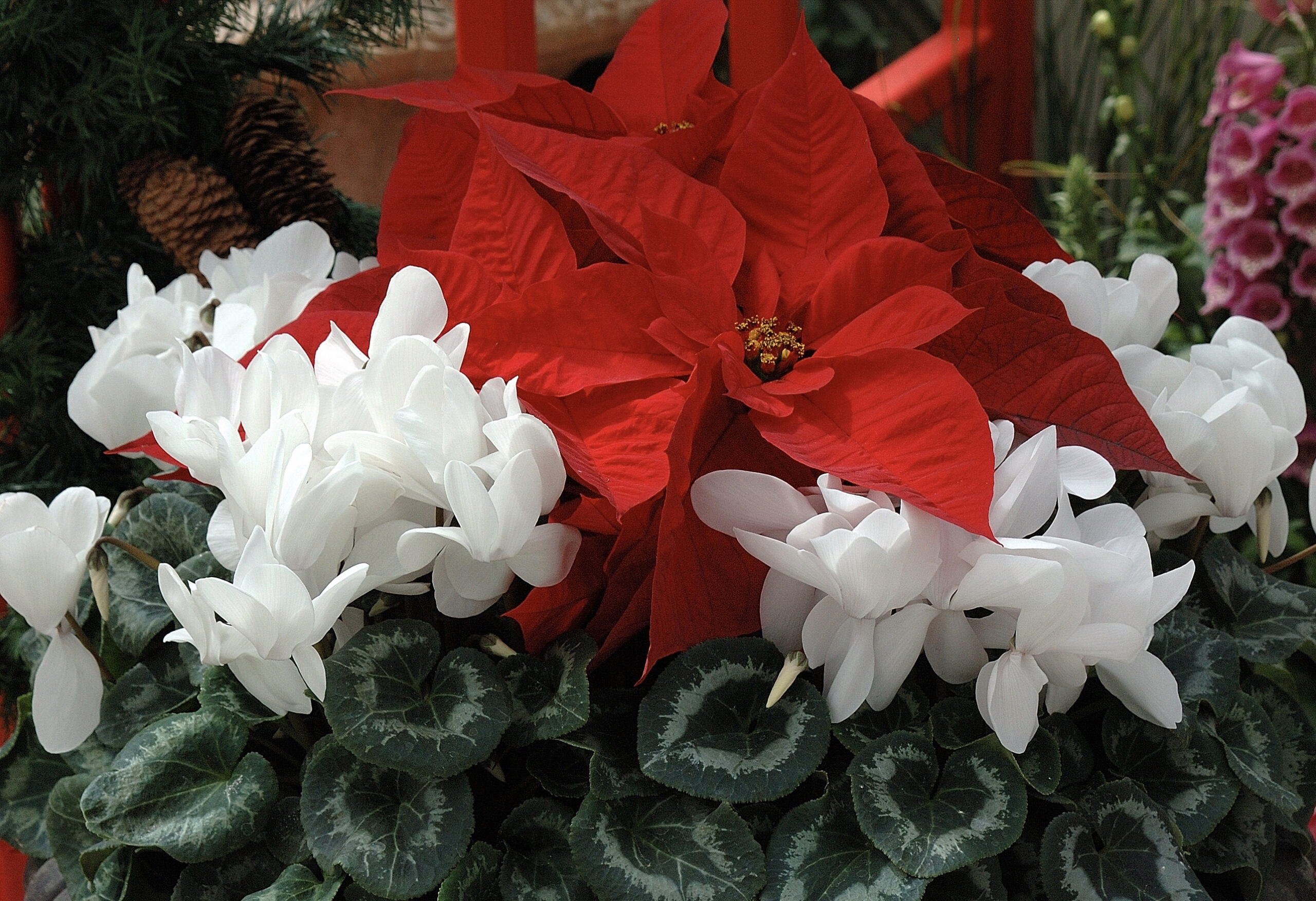
By
Norman Winter
Horticulturist, Author and Speaker
National Poinsettia Day just passed, December 12 to be exact. While I am sure the powers to be wanted a celebratory type day, from what I have been seeing this year is this may have been a deadline day. This most likely applies to poinsettia partners too! If you are asking what a poinsettia partner is then put on your thinking cap and gather around.
Proven Winners got most of us to thinking partners when they introduced the concept of combining poinsettias with Diamond Frost euphorbias. This is one of the best ideas ever and we now actually have three choices, Diamond Frost, Diamond Snow with double flowers and Diamond Mountain that is the taller of the three.
To a horticulturist like myself this combination is so special because both the Poinsettia and the Diamond Frost are Euphorbias. That’s right, they are cousins. Just like Christmas, families visiting and long-lost cousins getting together. Of course, the main reason we like this idea is that the red, pink, or variegated poinsettia looks incredible, it’s as though it is sitting on a bed of snow or frost. I have found these to be more available at fine florists.
But if you are going to create your own and go plant shopping then keep in mind some other options you might want to-try. For instance, a couple of years ago Jenny Simpson of Creekside Nursery in Dallas North Carolina introduced us to not only using caladiums at Christmas but even in combinations with poinsettias. She used the Heart to Heart White Snowdrift caladiums which turned out to be a perfect partner with red poinsettias.
My time as Executive Director at the Coastal Georgia Botanical Gardens in Savannah GA taught me there are opportunities for outside use with poinsettias, particularly if you are astute at long range weather forecasting. First consider that Savannah is technically zone 8B with a proclivity to lean into zone 9. We used poinsettias in large planters surrounded by Silver Bullet Dusty Miller or artemisia.
A similar application gave me the opportunity of photographing pink poinsettias mass planted in an atrium-like setting and surrounded by gray leaved Icicles helichrysum. But the most obvious and perhaps easiest if you are getting a late start is to combine your poinsettias with another Christmas plant like cyclamen. White cyclamen around a red poinsettia can be simply breathtaking.
This year I have also been watching what I call the professional garden club ladies walking out of both florists and floral departments with holly berries. We all think of hollies on swags above the fireplace or front door, but two or three preserved branches loaded with red berries stuck in a pot of white poinsettias is quick, easy and unbeatable.
Red berries for Christmas, landscape beauty, and of course feeding the birds is a prime reason to grow winterberry hollies like the compact Berry Poppins. Consider also growing Berry Heavy Gold winterberry holly. Cutting branches of the gold berries to be used with red poinsettias makes a stunning partnership. Go to Proven Winners site, Winterberry Holly: The Ultimate Guide to Getting Colorful Berries. If you don’t have poinsettias yet make today your shopping day! Follow me on Facebook @NormanWinterTheGardenGuy for more photos and garden inspiration.
-

 Country Lifestyle7 years ago
Country Lifestyle7 years agoJuly 2017 Profile: J.W. Hart
-

 Outdoors6 years ago
Outdoors6 years agoGrazing Oklahoma: Honey Locust
-

 Country Lifestyle2 years ago
Country Lifestyle2 years agoThe Two Sides of Colten Jesse
-

 Attractions7 years ago
Attractions7 years ago48 Hours in Atoka Remembered
-

 Outdoors4 years ago
Outdoors4 years agoPecan Production Information: Online Resources for Growers
-

 Farm & Ranch6 years ago
Farm & Ranch6 years agoHackberry (Celtis spp.)
-

 Equine7 years ago
Equine7 years agoUmbilical Hernia
-

 Country Lifestyle1 year ago
Country Lifestyle1 year agoSay Yes!

